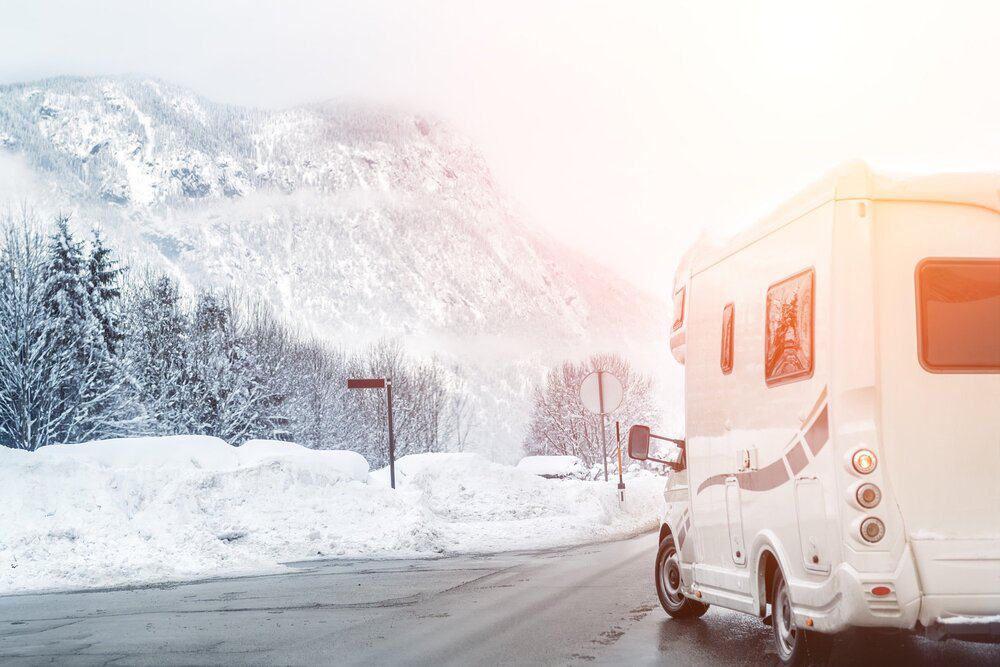Winter camping in an RV can be a magical experience, offering serene snow-covered landscapes and cozy nights inside your home on wheels. However, one of the biggest challenges RV enthusiasts face during cold weather camping is preventing their pipes from freezing. This comprehensive guide will walk you through everything you need to know to keep your RV’s plumbing system functioning smoothly, even in freezing temperatures.
Understanding RV Plumbing Systems
Before diving into prevention methods, it’s crucial to understand the components of your RV’s water system and identify the areas most vulnerable to freezing. Typically, the most at-risk areas include exposed pipes in the underbelly, water hookups, and storage compartments.
Insulation Techniques
Pipe Insulation
One of the most effective ways to prevent freezing is to insulate your pipes. Use pipe sleeves or foam insulation, ensuring you cover all exposed pipes thoroughly.
RV Skirting
Installing RV skirting can significantly protect your underbelly from cold winds. You can opt for DIY solutions or invest in pre-made skirting designed for your RV model.
Storage Bay Insulation
Don’t forget to insulate your storage compartments, especially those containing plumbing components. Use foam board insulation or specialized RV compartment insulators.

Get it at Amazon,
or check it out
on eBay.
Heating Solutions

Get some on Amazon,
or check it out on eBay.
Heat Tape and Cables
Heat tape can be wrapped around pipes to provide consistent warmth. Always follow manufacturer instructions and safety guidelines when installing electrical heating elements.
Space Heaters
Strategically placed electric heaters can help maintain a warm temperature inside your RV. Remember to follow all safety precautions when using portable heaters in confined spaces.
Tank and Pipe Heating Pads
Consider installing specialized RV holding tank heaters and using heated water hoses for your hookups to provide targeted warmth to these vulnerable areas.
Water System Management
Using Internal Water Systems
When possible, rely on your onboard freshwater tanks rather than external hookups. This reduces the exposure of your water system to external freezing temperatures.
Draining and Winterizing Techniques
If you’re not using your RV for an extended period, properly drain your water systems and consider using RV antifreeze for additional protection.
Campsite Selection and Setup
Choose your winter campsite wisely. Look for locations that offer natural windbreaks and good sun exposure. Position your RV to maximize sunlight on the plumbing side and minimize wind exposure.
Monitoring and Maintenance
Regularly check your RV’s temperature, especially in areas prone to freezing. Consider installing temperature sensors with alerts to notify you of dangerous drops in temperature.
Emergency Thawing Procedures
If you do encounter frozen pipes, it’s essential to thaw them safely. Use hair dryers or heat guns, applying heat gradually to prevent damage to the pipes.
Advanced Winter Camping Strategies
For frequent winter campers, consider investing in a four-season RV or making aftermarket modifications to improve your RV’s cold-weather performance. You might also want to explore alternative water sources, such as external water jugs or even learning how to make fire with sticks for melting snow in extreme situations.
Environmental Considerations
As you prepare your RV for winter camping, consider eco-friendly insulation and heating options. Practice responsible water usage to minimize your environmental impact.
Winter RV camping can be a wonderful experience for the whole family when you’re properly prepared. For more tips on making your cold-weather adventures enjoyable for everyone, check out our guide on the best camping gear for families.
By following these strategies and staying vigilant, you can prevent frozen pipes and enjoy worry-free winter camping in your RV. Remember, preparation is key to a successful and comfortable cold-weather RV adventure.

Leave a Reply